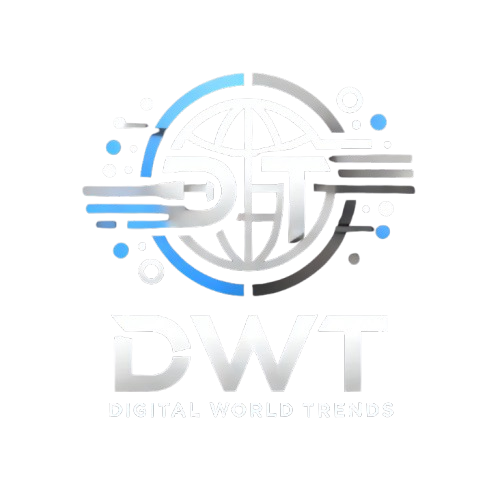Introduction:
In the digital era, social media has become an invaluable tool for brand building, allowing businesses of all sizes to engage with their audience, showcase their values, and grow their market reach. Platforms like Instagram, Facebook, Twitter, LinkedIn, and TikTok offer unique opportunities for storytelling, customer engagement, and brand awareness. This article delves into strategies for leveraging social media for effective brand building, covering tactics to foster a consistent, engaging, and authentic brand presence.
Understanding Your Brand Identity
- Define Your Brand: Before diving into social media strategies, define your brand’s personality, core values, mission, and voice. Having a clear understanding of who you are as a brand helps in creating authentic content that resonates with your audience.
- Identify Target Audience: Different platforms attract various demographics. Research your target audience to determine which social media platforms are best suited for your brand. For instance, LinkedIn is ideal for B2B, while Instagram and TikTok are popular among younger audiences for lifestyle and fashion brands.
Selecting the Right Platforms
- Instagram: Great for visual content, showcasing products, and influencer collaborations. Use Instagram Stories and Reels to highlight brand moments and behind-the-scenes content.
- Facebook: Offers comprehensive advertising tools, audience segmentation, and community-building opportunities through groups and pages. Ideal for sharing longer-form content.
- Twitter: Perfect for real-time engagement, news updates, and customer service. Use Twitter to keep followers updated on industry trends, events, or product announcements.
- LinkedIn: For B2B companies, LinkedIn is essential for networking, establishing authority, and building professional relationships.
- TikTok: Known for its short-form videos, TikTok is effective for viral marketing, especially among Gen Z. Use TikTok challenges, hashtags, and creative content to reach a younger audience.
Consistency is Key
- Develop a Content Calendar: Consistency is essential for building a strong online presence. A content calendar helps streamline posts across platforms and ensures a steady flow of brand messages.
- Tone and Voice: Your brand’s voice should be consistent across all platforms. Whether it’s friendly, professional, or humorous, a uniform tone makes your brand recognizable and builds trust.
- Brand Colors and Visuals: Use consistent color schemes, fonts, and logo placements to create a visually cohesive social media presence. This consistency strengthens brand identity and makes your posts easily identifiable.
Creating Engaging Content
- Educational Content: Share content that is valuable to your audience, such as tips, tutorials, and informative posts. This type of content establishes your brand as a knowledgeable authority.
- User-Generated Content (UGC): Encourage customers to share their experiences and tag your brand. UGC not only builds community but also serves as authentic testimonials.
- Behind-the-Scenes Content: Offering a glimpse of your team or workplace can humanize your brand, building a deeper connection with followers.
- Storytelling: Use storytelling to emotionally engage your audience. Share your brand’s journey, challenges, and success stories to create a relatable and memorable brand.
Utilizing Hashtags and Keywords for SEO
- Branded Hashtags: Create unique hashtags for your brand. Encourage followers to use these hashtags when posting about your brand, which can help increase brand visibility.
- Trending Hashtags: Use popular industry hashtags to increase your posts’ discoverability among users following or searching for those trends.
- Keyword Optimization: Optimize your profiles and posts with relevant keywords to improve SEO on social media platforms. Include keywords in your bio, captions, and hashtags.
Leveraging Influencer Marketing
- Find the Right Influencers: Collaborate with influencers whose audiences align with your target demographic. Micro-influencers often have highly engaged followers and can be more cost-effective than larger influencers.
- Sponsored Content: Working with influencers to create sponsored content can help increase your brand’s credibility and expand reach. Ensure the content aligns with your brand’s message for authenticity.
- Engagement Over Follower Count: When selecting influencers, focus on engagement rates rather than just follower count. High engagement shows that followers are interested and likely to engage with the promoted content.
Engage with Your Audience
- Prompt Responses: Engage with your audience by responding quickly to comments, messages, and mentions. An active response builds trust and improves customer experience.
- Ask Questions: Asking questions or hosting polls encourages followers to interact with your content. Increased engagement helps boost your posts’ visibility and strengthens community ties.
- User Feedback: Pay attention to customer feedback on social media. Responding to complaints and addressing issues demonstrates customer commitment and can enhance brand loyalty.
Using Paid Advertising for Brand Reach
- Targeted Ads: Social media advertising allows precise targeting based on demographics, interests, and behavior. Use these tools to reach your ideal audience effectively.
- Ad Formats: Each platform offers various ad formats, including carousel ads, stories, sponsored posts, and videos. Choose formats that align with your goals and capture your audience’s attention.
- Retargeting: Retargeting ads help bring back users who’ve shown interest in your brand but haven’t converted. This strategy can boost conversions and reinforce brand recognition.
Analyzing Metrics for Success
- Key Performance Indicators (KPIs): Track KPIs like engagement rate, reach, impressions, click-through rate, and conversions to measure social media effectiveness.
- Platform Analytics: Use tools like Instagram Insights, Facebook Analytics, and Twitter Analytics to understand which content performs best, allowing you to refine your strategy.
- Adapt Based on Data: Regularly review analytics to see what resonates with your audience. Adapt your content and posting schedule based on performance data to improve future results.
Staying Updated with Social Media Trends
- Stay Current: Social media trends evolve rapidly. Following industry updates, algorithm changes, and new features keeps your brand relevant.
- Experiment: Don’t hesitate to experiment with new content types, like live videos, stories, and interactive features. Testing new trends can offer valuable insights into what your audience enjoys.
Case Studies of Successful Brand Building on Social Media
- Nike: Known for powerful storytelling, Nike uses Instagram and Twitter to share motivational stories, inspiring athletes and non-athletes alike.
- Starbucks: Starbucks uses UGC by encouraging followers to share their experiences. Their #StarbucksStories campaign effectively engages customers and amplifies brand reach.
- Airbnb: By focusing on user-generated photos and travel experiences, Airbnb has created a visually appealing Instagram feed that showcases unique stays and builds trust in its brand.
Conclusion: Building a Brand That Resonates
Using social media for brand building goes beyond promoting products—it’s about establishing a relatable, trustworthy, and memorable identity that engages your audience. By understanding your brand, creating valuable content, and using analytics to refine your strategy, you can leverage social media to build a robust brand presence that stands out in a crowded market. Social media is a dynamic tool for connecting with customers, fostering loyalty, and ultimately driving business growth.

